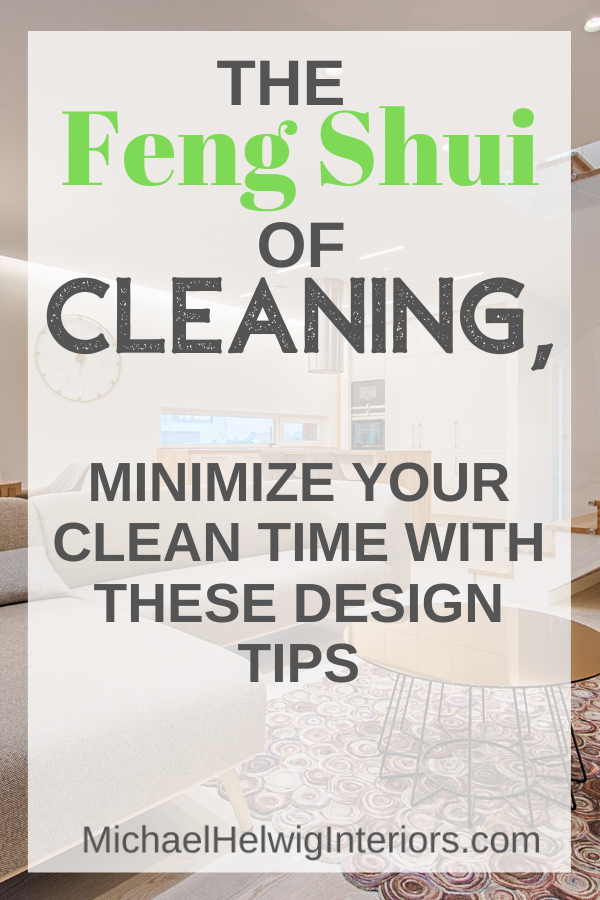Guest post by: Busybee Cleaning Services
A cluttered space is not easy to clean.
Harmonizing your environment is the philosophy behind feng shui, and whether you’re a cynic or a true believer, there’s something to be said about achieving balance in your life. I’m no feng shui expert, but I do know a thing or two about set-ups, and I bet you’ve never thought about how arranging your furniture can affect your ability to keep your house clean. Intrigued? I hope so, because nothing is more rewarding than finishing your chores and looking over your sparkling environment. If you find you are putting cleaning off because it takes too much time, however, you likely don’t have a balanced environment. Let’s talk about feng shui (when it comes to cleaning, that is) and how you can maximize your space while reducing your cleaning time.
Arranging Your Furniture
Perhaps one of the most important things about making your housecleaning easier is how you arrange your furniture. Sure, it might look cool to have an eclectic set up with a ton of pieces scattered oddly about in your space, but an unorganized space is impossible to clean. Like feng shui, simplicity is crucial when arranging your furniture to create an easy cleaning space, and you should keep a few things in mind.
Placing your furniture up against walls not only maximizes your space and makes smaller rooms look larger, but it also makes keeping the area clean easier. It’s much quicker to vacuum a large, square space than to attempt to vacuum between (and under) numerous pieces of furniture scattered about. Another benefit is not having empty space behind your furniture to collect dust, leaving you with the necessity of squeezing between the sofa and wall to clean the area.
Using larger pieces of furniture also helps. First, it’s much easier to arrange less furniture in a uniform and easy-to-clean manner than a ton of smaller pieces. Second, larger pieces, such as your sofa and bed, look natural pushed up against the wall. Included in this mix is a larger, rather than smaller coffee table. What is easier to dust? A large coffee table placed in front of your couch or several smaller tables scattered throughout your living space. You see where I’m going with this.
Worried about moving larger furniture when it’s time to clean underneath? No need. Furniture casters come in all shapes and sizes and make rolling your items out of the way while cleaning a piece of cake.
Easy-to-Clean Surfaces
The size and arrangement of your furniture is only half the battle. Some surfaces are simply easier to keep clean than others, that’s the bottom line. While that suede couch might look elegant in your new living room, your Labrador’s fur sticking to it is going to quickly become a huge frustration. So, what surfaces are better for quick and easy cleaning than others are? Consider this.
Do you have pets? If you do than you might already know that carpeting just works better with pets than hardwood floors for the simple reason that the fur sticks to carpet rather than floats around. Vacuuming a carpet cleans it quickly and easily, and acrylic and polyester fibers are generally the easiest to keep clean. Having your carpet treated with a stain guard also makes cleaning up unexpected messes a breeze.
You probably don’t want carpeting in your kitchen or bathrooms, however, so let’s talk tile surfaces. Sure, it’s nice to have the old-fashioned tile pieces spaced perfectly and held securely with grout… but what about that grout? When thinking easy-to-clean flooring surfaces (and countertops), think seamless, because nothing gets dirty quicker than tile grout.
For your floors, stained and sealed concrete, linoleum, or sheet vinyl is the way to go. These surfaces sweep and mop easily and do not have hard-to-clean seams. For your countertops, think granite, stainless steel, quartz, or laminate. Again, no seams, easy to clean with the appropriate cleaners, and if you set your sink low into them, you can just sponge spills and messes directly into your sink. It really doesn’t get much easier than that.
Cleaning is a chore, but it doesn’t have to be a huge burden. If you arrange your furniture with a sense that larger empty spaces are easier to keep clean, use casters to easily move the pieces once it’s time to clean underneath them, and select materials that are low-maintenance, you’ll find the perfect harmony between keeping your house clean and enjoying quality downtime. Sounds like the perfect feng shui to me.
“This man is a plant shaman. He not only designs beautiful rooms, he’s got a green thumb that works like magic! My peace palm never looked better!”
“Michael Helped me to get my home office in magazine ready form. Thank you a million times for helping me figure this room out. It’s now my favorite room!”
What to Read Next:
5 Quick Fixes to Improve the Feng Shui Energy in Your Home
So everything in your life has energy. Today I’m going to talk about the energy of physical items in your house and how the energy of those items affects you. If you’re not familiar with Feng Shui, It’s a part of Chinese Taoism, a philosophy that’s been around for millennia which, according to good old Wikipedia: “is also known as Chinese geomancy, originating from ancient China. It claims to use energy forces to harmonize individuals with their surrounding environment...The Feng Shui practice discusses architecture in terms of "invisible forces" that bind the universe, earth, and humanity together, known as qi.” In the Western world, qi is pronounced chi and that energy can influence how you feel for better or worse. If you’re feeling tired or stressed or unmotivated, indulge in this read because making a few very easy changes can help you achieve positive energy flow and a better understanding of how the arrangement of your stuff could be negatively influencing you. It’s about to get woo up in here but I promise you, if you keep an open mind, you’ll benefit greatly from these 5 quick fixes you can easily make to improve the Feng Shui energy in your home.
Make The Front Of Your Home Welcoming
Let’s begin with the front of the house. The approach, or outside front of the house is where chi energy finds us first. Think about Feng Shui in terms of first impressions for a visitor. Ask yourself, is my house number clearly visible and easily legible? Is your name clearly marked on a plague or the mailbox? That welcoming feeling is the first quick fix to improve the Feng Shui Energy in your home. It says to it, “I am here, come visit me!”
In addition to that, add in some red. When I moved into my first home, I painted my wood front steps and door red. My door was hidden inside an enclosed porch which is why I went ahead and painted the steps. I wanted to make sure energy would flow my way. I’m happy to report that it did. If you don’t want to do something as semi permanent as that, you can add red planters on the porch or stoop next to the front door to attract chi. Red is energetic and dynamic and energy flows where attention goes. It’s no different with chi.
Don’t Reflect Chi Energy Back Out
Do not to have a mirror directly opposite the front entrance of the home. Mirrors will reflect chi energy right back out the door. This is also true for mirrored closet doors opposite the front entrance. Swap them out! An awesome quick fix to improve Feng Shui energy in this situation is to cover the mirrored doors with curtain panels so they don’t reflect. When you want to use them, pull back the curtain and give yourself a check before leaving the house. Just cover them back up before opening the door.
The same applies to windows directly opposite the front door. That’s a path of least resistance and the chi will take it every time. It’s best to cover the window with curtains to stop the flow of energy. If you have a spectacular view, try softening the window with sheers. This won’t completely stop the chi flow but, it will slow it down and give it some chance to redirect.
Read More
Michael is Principal designer and blogger at Michael Helwig Interiors in beautiful Buffalo, New York. Since 2011, he’s a space planning expert, offering online interior e-design services for folks living in small homes, or for those with awkward and tricky layouts. He’s a frequent expert contributor to many National media publications and news outlets on topics related to decorating, interior design, diy projects, and more. Michael happily shares his experience to help folks avoid expensive mistakes and decorating disappointments. You can follow him on Pinterest, Instagram and Facebook @interiorsmh.










